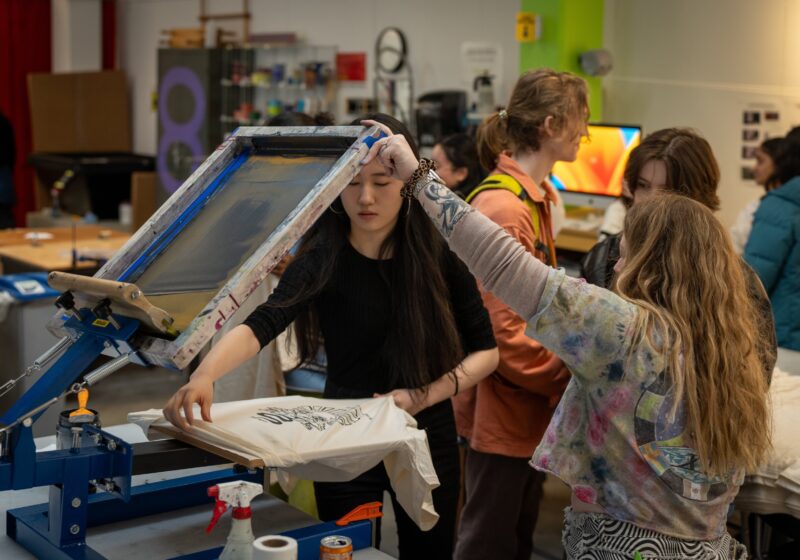The recruiting process for collegiate athletes has been mythologized, debated and challenged so many times in recent years that it can be tough to separate fact from fiction. Whether or not you’ve been heavily exposed to the lurid tales of ill-gotten Hummers, one too many text messages or the high drama of fax machine malfunctions, what you’ve heard has been almost exclusively about the recruiting process of Division I schools. But what about the little guys?
The University of Rochester plays, almost exclusively, at the Division III level (the men’s squash team is in Division I). There are enormous differences between the recruiting process bandied about in the news and the one here at the U of R, the biggest being obvious: money. Last year, Rochester spent $143,234 on recruiting, while University of Alabama, for example, spent $2,193,655 during the same period. Nick Saban, Alabama’s head football coach, is paid $7 million per year, the highest annual salary of any public employee in the country. Meanwhile, the average salary for a head coach at UR is about $46,000. So, it should be pretty clear that the recruitment process in Division III is a far, far different animal than it is in Division I.
The following description of the process is based on interviews with Rochester athletes and administrators. We were unable to get in touch with coaches concerning this topic.
Recruits start to be contacted by coaches who have either seen them play or have heard about them on the recommendation of another coach during their junior year of high school. If the coaches haven’t seen the recruit play in person, they can turn to highlight videos, usually put together by the recruits themselves. This is more common today, according to George VanderZwaag, head of the UR Athletic Department, as recruiting has increasingly become a more national endeavor (though some sports, like softball and soccer, have summer showcases that are vital to a coach’s perception of an athlete). If a school decides to pursue a recruit, they’ll contact them in the form of emails, letters, packages or text messages. Athletes soon find themselves bombarded with communication, though, as a freshman swimmer told the CT, the schools that are serious about recruiting the athlete will send more personal mail. According to a freshman football player, the recruit’s relationship with a coach is a huge factor in deciding which schools are real options. “Sometimes it’s a school,” he says, “but usually, you get attached to a coach.” It should be noted that this athletic courtship isn’t extended to all recruits—some, like a freshman softball player who spoke to the CT, said that she sent out recruiting videos to schools that she had already applied to, but the response was, “Yeah, if you get into the school, we’ll start talking”.
Once a mutual interest has been established, an invitation will be extended to a recruit to make an official visit to campus. During this time, a recruit will receive a tour of the campus and the athletic facilities from either the head coach or an assistant and possibly meet the Athletic Director as well. Later, a recruit will be assigned to a current player on the relevant team and stay for a night or two in order to get a gauge on the culture of the team and the school. If the visit is successful and the interest is still high between the recruit and the coach, the recruit will be encouraged to apply Early Decision to the school. Though this doesn’t guarantee anything, as many athletes made clear in interviews with the CT, it’s usually a good sign that admission will be granted.
Unlike Division I schools, Division III schools can’t hand out full scholarships in return for committing to a team. Though a strong and well-established athletic department can have sway in admissions when it comes to an athlete’s application, this varies school-to-school and player-to-player. A freshman swimmer told CT that his coach let him know he’d been admitted three days before official acceptance letters came out, but that he believed that his team has “very little sway” within the admissions department. A freshman soccer player noted that at the Division III level, the question of academics is far more important than at a Division I school. He said that, “[i]f you’re not even within a certain range, even at a low-ball range, it’s just not even gonna work, even if you’re the best player.”
He believes that a coach’s influence within admissions processes has a lot to do with the sport and the skill of the player. He also noted that, while schools can’t offer athletic scholarships, they do offer academic grants to players who otherwise wouldn’t be able to attend the University.
VanderZwaag said that UR seeks to “identify students who will make a positive impact on our teams,” and that he hopes “athletics will be a small, significant difference for some…in the recruiting process.” Several players disputed this, sharing that they felt that they had teammates who fell far short of the academic prowess required by UR, and that athletics had been the only reason, or the most significant reason, that a recruit had been admitted to the school.
Bernstein is a member of the class of 2018.






